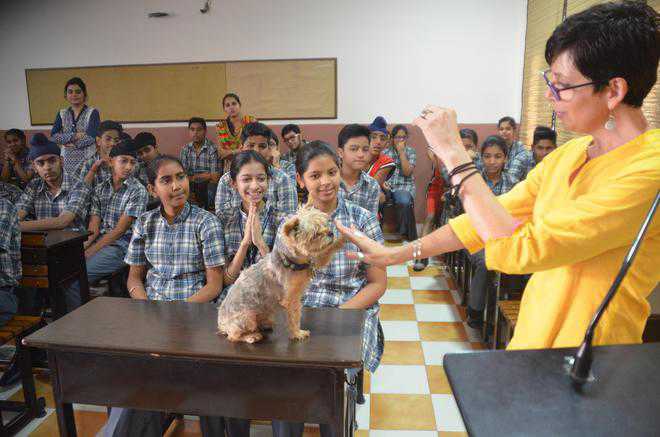The ‘mad dog’ syndrome
Eesha Duggal
Amid the canine fear sweeping across the Tricity, every dog on the street—the one we fed, befriended and protected — is suddenly being looked at with suspicion.
More than 850 dog bites have been reported in the Tricity in the last one month. Victims are hastening to government dispensaries, waiting outside the doctor’s chamber as the dreadful stories of similar incidents fill the air. But should one really worry in every case of dog attack?
“No,” says Inder Sandhu.
Animals’ person
Sandhu relocated to Chandigarh in November 2015 after working as an Animal Control Officer in Texas for six years and an Animal Cruelty Investigator for four years. He is trained as an officer to reduce the human-animal conflict. An honourary Animal Welfare Officer from the Animal Welfare Board of India, he is also the founder of NGO Peedu’s People. Along with his teammate Tina, who hails from Phoenix, Arizona, and has worked in animal rescue for 20 years, he has been making tireless efforts to educate the people and debunking the myths related to rabies.
“A rabid dog dies within 10 days, which makes following the dog so important. But that’s what is lacking here. Little is being done to keep the track of the dog, which is the main reason behind the increasing population of rabid canine,” says Sandhu. An infected dog can bite and pass on the virus to other dogs.
Key called awareness
Rabies is a fatal disease once the clinical symptoms set in. But post-exposure prophylaxis is an immediate treatment after exposure.
The three categories of contact with the rabid dog decide the course of treatment. According to the WHO, category-I includes skin licking or touching. If you’ve been having sleepless nights remembering touching or being licked on an intact skin by a rabid dog then you may throw your fears out of the window. The first type of contact requires no vaccination.
Category-II and III, however, call for immediate medical attention and treatment.
Go for Counselling
Sandhu says there’s a great need to counsel the victims in order to de-stress him. “When one waits for the vaccination are highly traumatising, given the kind of dreadful things we have heard about the dog attacks,” he says.
Culling is no answer
In November last year, the Supreme Court restrained vigilante groups in Kerala from distributing subsidised air guns to people for culling the stray dogs. The practice did not go down well with the animal lovers.
“In Chandigarh, there’s a need to adopt an effective and humane approach to control the dog population. Sterilisation on regular periods by NGOs and professionals must be roped in. Culling is no long-term solution,” says Rasika, a UIET student, even as the Tricity remains divided on the issue.
According to the Chandigarh MC, 8,500 stray dogs have been sterilised in the last two years. “The sterilised dogs must be tagged. This will help the authorities keep a track on the number of treated animals. The move will also, to a great extent, dispel the ‘mad dog’ fear among the people,” adds Sandhu.
Immediate steps to take after the bite
- Extensive washing of the wound with water and soup
- Cover the area with sterile bandage
- Visit a doctor
Don’t
- Run, Scream or yell
- Approach unfamiliar dogs
- Touch the dog on the head
- Disturb the animal while eating or sleeping
- Touch the pups
- Pet a dog before it sniffs you









